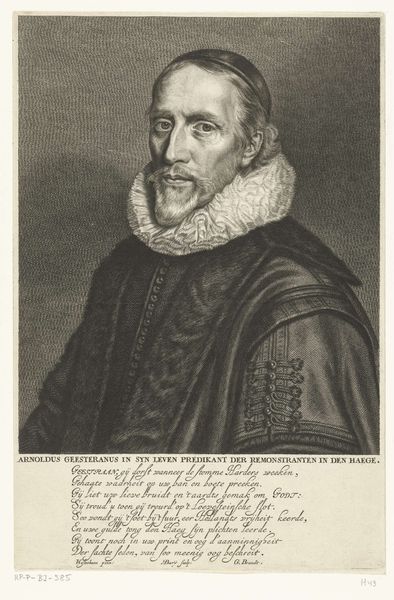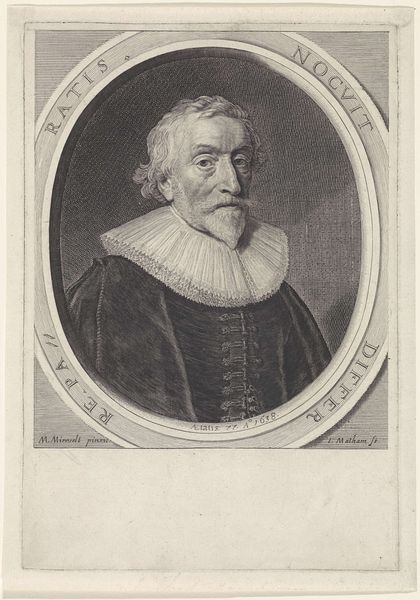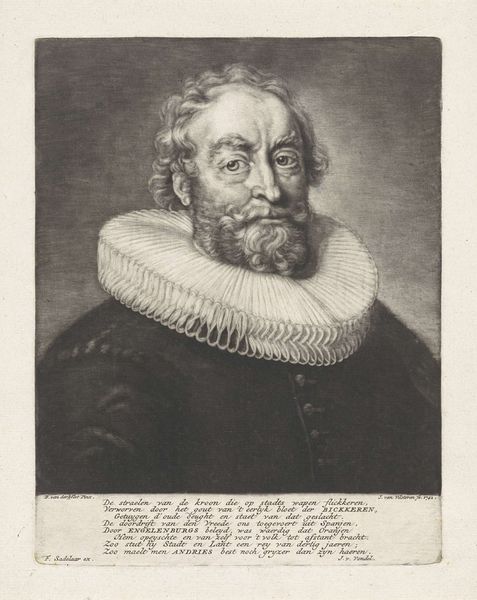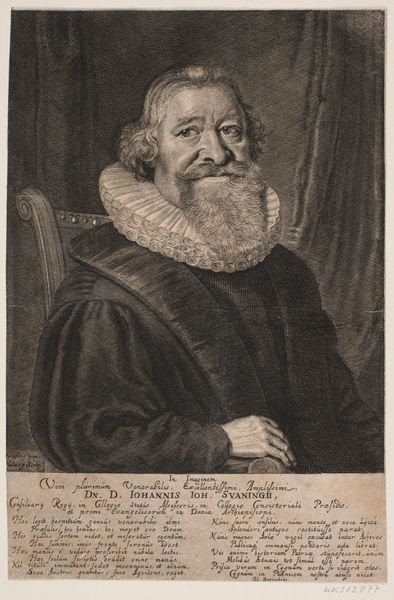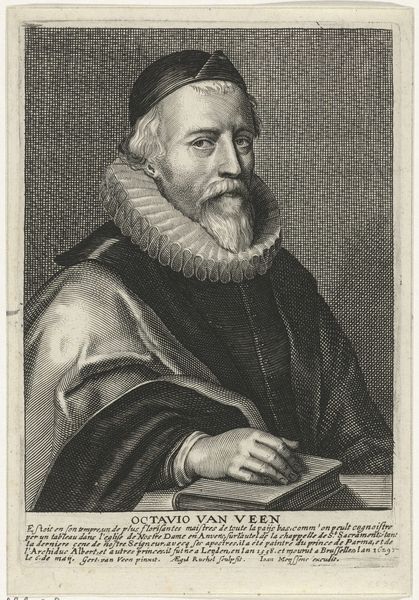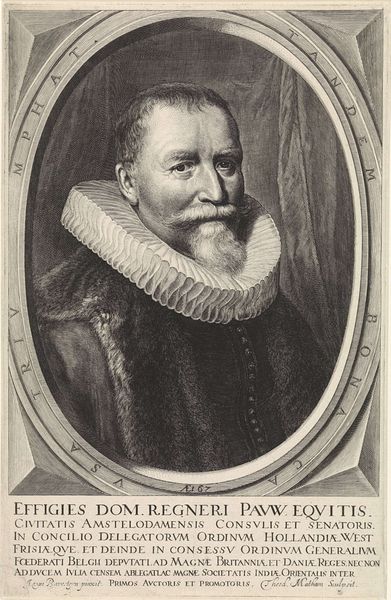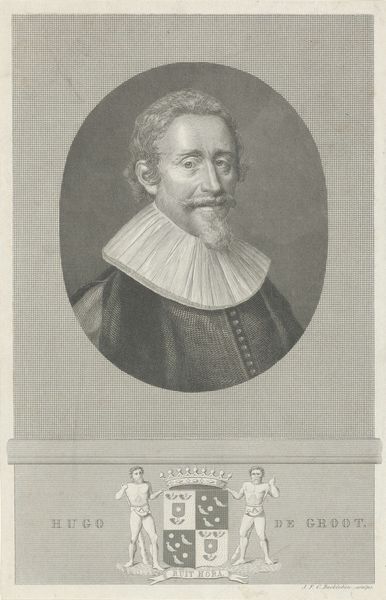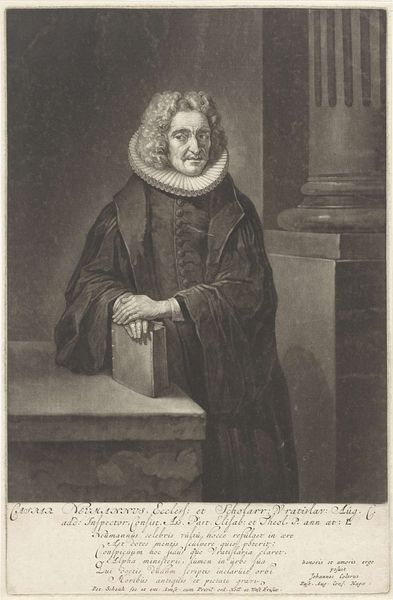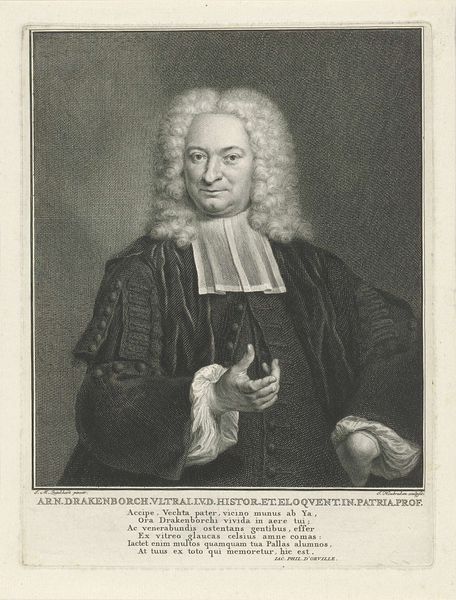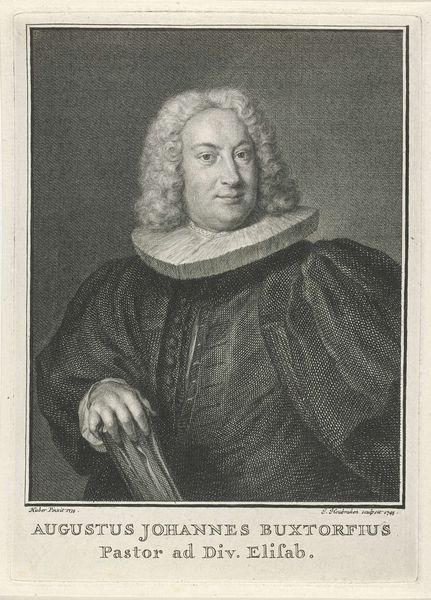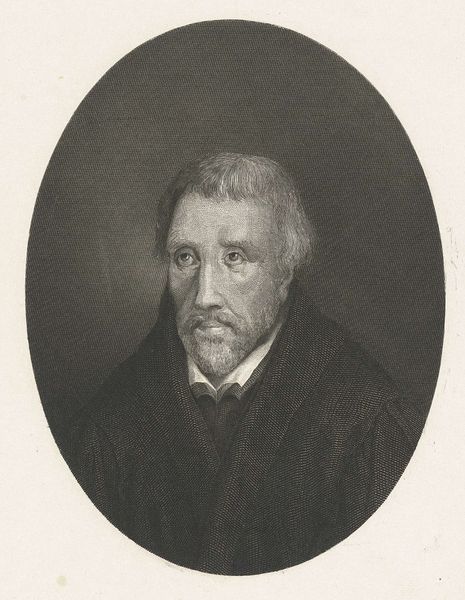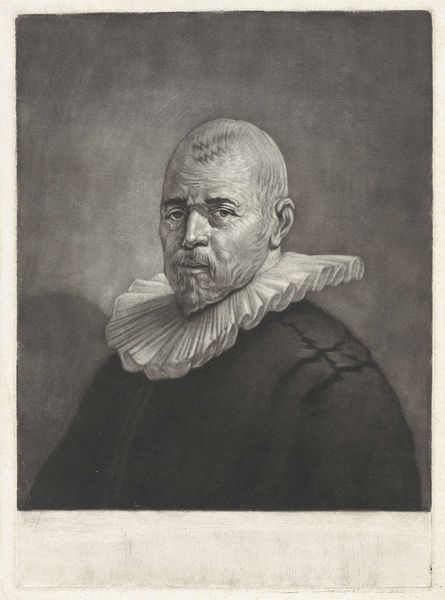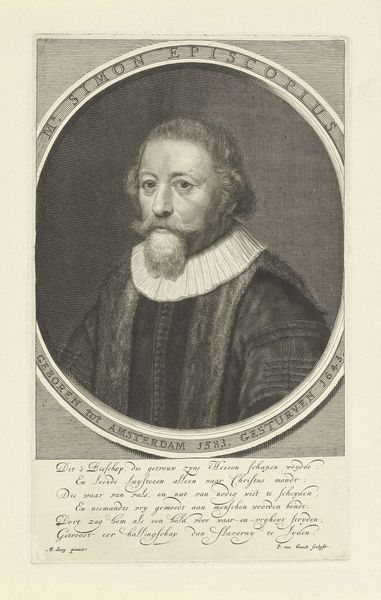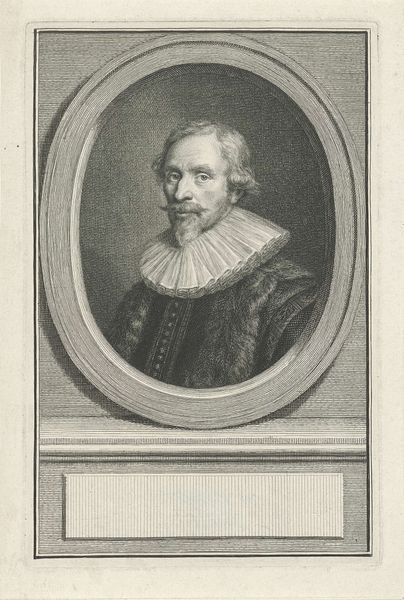
print, engraving
#
baroque
# print
#
history-painting
#
engraving
Dimensions: height 372 mm, width 269 mm
Copyright: Rijks Museum: Open Domain
Editor: So, here we have "Portret van David Nuyts," an engraving dated between 1645 and 1686 by Jonas Suyderhoef. The ruff and the serious gaze give this portrait such a strong, almost severe, feel. What do you see in this piece? Curator: The ruff is precisely what captures my attention – a symbol of status and adherence to social norms. But also, note how it almost cages the face, creating a separation. This relates to the Dutch emphasis on individuality during this period and an increasing tension between social role and individual identity. Do you see any other elements that hint at his internal world? Editor: Maybe the eyes? They don’t seem to hold the same rigidness as the ruff. They look... softer, almost vulnerable. Curator: Precisely! That subtle touch is telling. While the sitter presents a public image of importance and piety, there is also a depth of feeling that comes through. Suyderhoef is showing us how societal expectations are carefully balanced with a desire for inwardness. This tension is mirrored in the sharp detail of the engraving itself versus the slightly softened treatment of his features. How does that connect to the inscription below? Editor: I'm afraid I can’t read the original Dutch, but I guess it could be expanding upon who this man was. Curator: Yes, but the inscription is an essential clue – look how it surrounds and contains the image. Visual language in these prints created an immediate context and narrative around an individual’s likeness. Together with its symbolism, and societal function for remembrance, Suyderhoef's print creates a lasting, almost immortal image. Editor: That's a great observation. I had missed so much looking at the print in isolation, now I appreciate how interwoven its symbolism truly is.
Comments
No comments
Be the first to comment and join the conversation on the ultimate creative platform.
